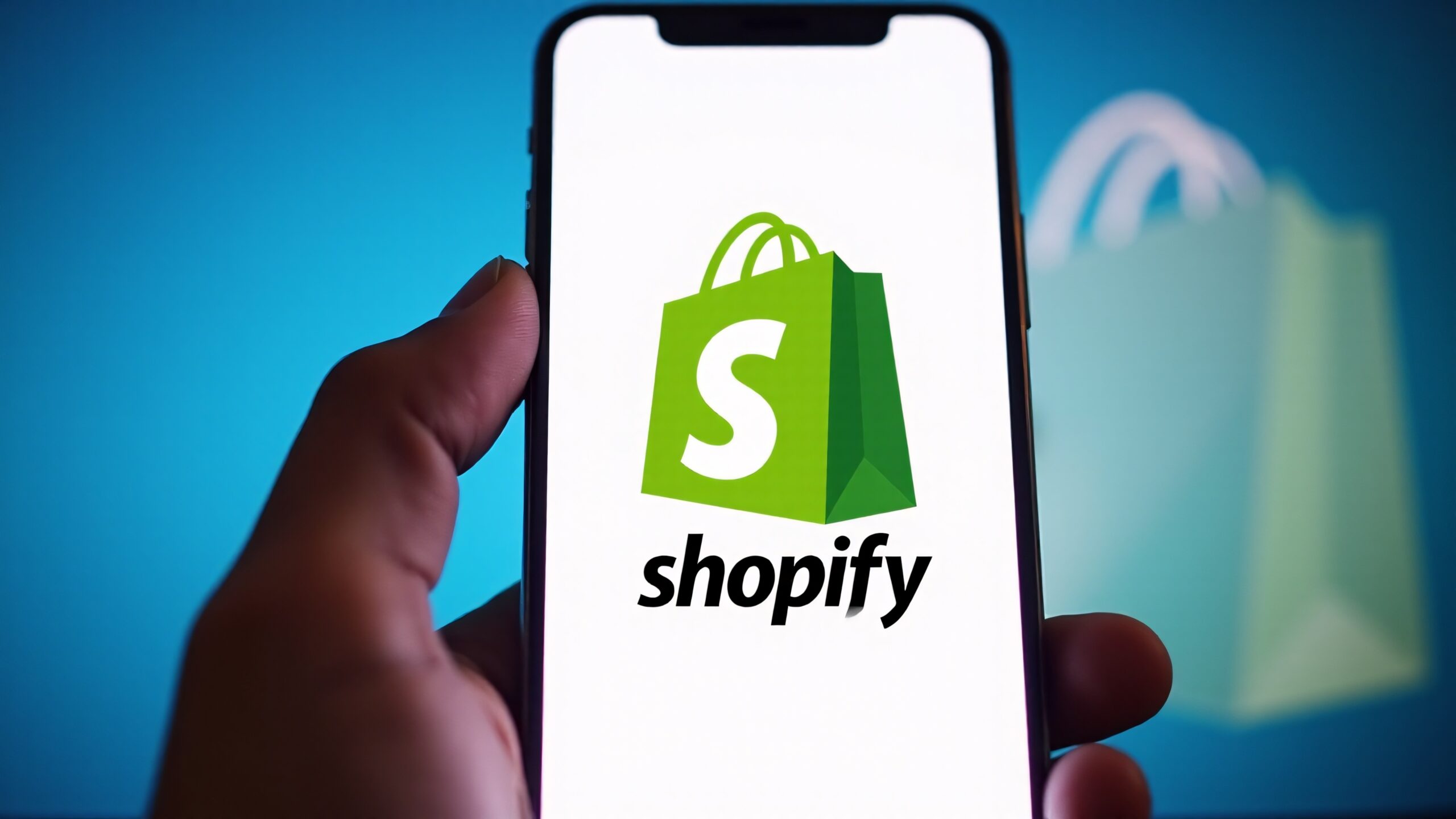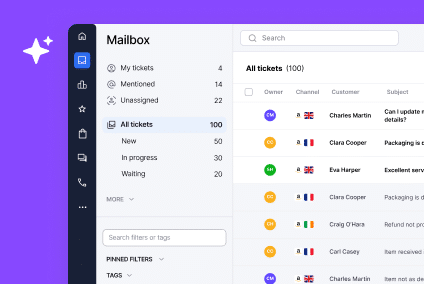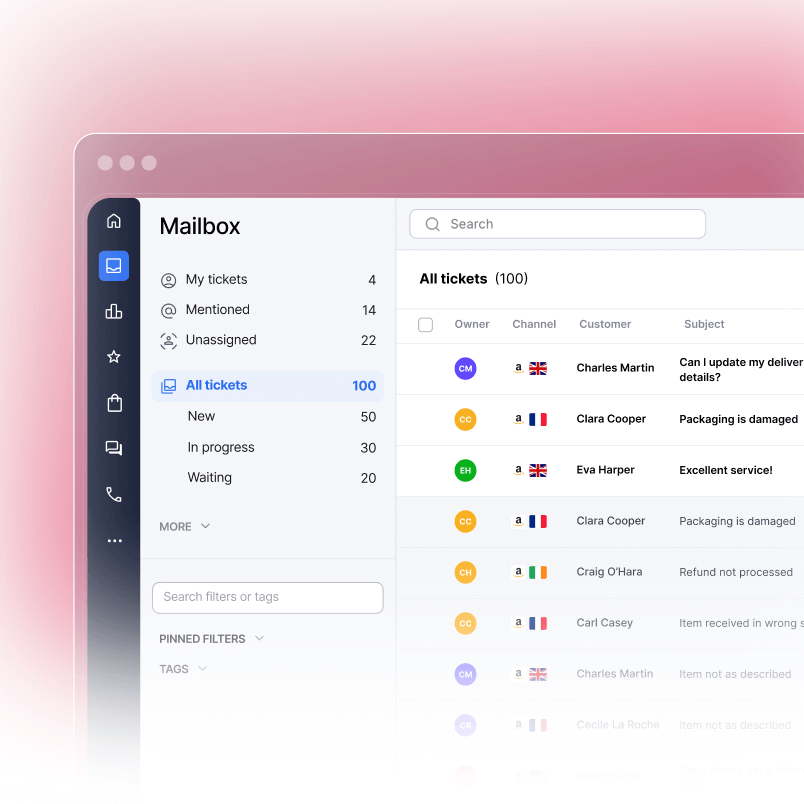How does AI personalize Shopify customer support, and is it worth your time? Short answer: yes, because it turns store data into timely help that feels personal and drives revenue. You’ll see faster replies, fewer repetitive tasks, and conversations that convert more often.
In this guide, we’ll show how to turn Shopify customer support into personalized, revenue-driving conversations using Shopify AI personalization, predictive insights, and practical automations you can spin up fast.
Why personalization matters in Shopify customer support
Shoppers want quick, relevant answers without much effort …and meanwhile, your team wants context, consistency, and tools that don’t get in the way.
So, good news: AI can bridge that gap by gathering order data, browsing behavior, and past conversations to tailor replies in real time. You get less copy and paste, fewer escalations, and more conversations that end in a purchase or a clear next step.
When you see the word “personalization”, you probably think about a message that greets you by name. And you’re not wrong – but it’s so much more than that. It’s about showing the right shipping policy for their region, nudging the right upsell for their size or usage, and pre-filling returns that match your rules.
With Shopify AI personalization in the mix, agents start with context and end with confidence. And this Shopify-tailored support is powerful because it feels human and scales with your catalog.
70% of all Shopify Inbox conversations end with shoppers making a purchase, according to Shopify data.
What personalized Shopify support looks like in practice
Think layers you can turn on as you go. Start simple, then refine.
A centralized inbox that knows your customer
Pull orders, previous tickets, and channel history into one view so Shopify customer support never starts cold. When an agent can see the last purchase, warranty status, and tracking in the same place, the first reply is faster and more accurate. If you want the nuts and bolts, connect your helpdesk through eDesk’s Shopify integration so agents can update orders and keep threads synced without switching tools.
Wetsuit Outlet cut response times by 38% after centralizing their workflow with eDesk.
Smart Shopify automation on the busywork
Set rules to triage “where’s my order”, size exchanges, and repeat issues. Smart tags, SLA timers, and quick replies mean less manual routing. You can also add Shopify customer automation that drafts first responses and pulls in order numbers or tracking links so agents press send with confidence.
AI-written help that still sounds like you
Use Shopify AI-driven CX to create first-pass replies in your brand voice, then let your agents tweak the tone. Translate on the fly and summarize long threads so new agents ramp faster and veterans stay on higher-value work.
Life Interiors cut response times by 60% and increased sales by 40% after adopting eDesk.
Pre-sale help that lifts conversion
Add light prompts on product pages where shoppers usually hesitate. Offer sizing tips, shipping clarity, or a quick comparison to a similar item. Predictive Shopify CX can surface the next best action based on signals like cart value, time on page, or stock level. Personalized Shopify support here reduces back-and-forth later and helps improve CX and loyalty as buyers feel looked after.
Average eCommerce conversion rates sit around 2.5% to 3%, according to Shopify data.
Where do AI insights make the biggest difference?
Personalization gets real when Shopify predictive insights shape what you do next. Here are just some of the hotspots it addresses.
Predictive intent at checkout
Use Shopify predictive insights to nudge when a shopper hovers on shipping or payment fields. Suggest the fastest option, confirm delivery windows, or show a low-friction alternative. If there’s a known carrier delay in their region, show it before they ask. That honesty builds trust and saves a ticket.
Order status and post-purchase
Most tickets start with “where’s my order?” Let rules auto-tag these, attach live tracking, and suggest a reply that reflects the carrier’s latest scan. The agent checks, tweaks, and sends in seconds. Follow with a friendly prompt about care tips or setup if the item typically triggers how-to questions. The best Shopify customer support is the sort that anticipates needs.
An eDesk chatbot now resolves more than 70% of WaveSpas’ queries on the spot.
Returns and exchanges
Turn a likely return into an exchange with a size or color suggestion based on similar customers. AI Shopify personalization can draft the exchange against the order, apply your rules, and route to a human for approval. Faster for the shopper, cleaner for finance.
After-hours coverage
If your store spans time zones, give customers a first answer even when the team is offline. A well-trained bot can handle policies, order lookups, and product basics, then escalate cleanly when a human wakes up. It keeps Shopify customer support responsive around the clock.
Examples you can borrow and tune today
Use these as building blocks. Start with one or two, measure, then add more.
Personalized order lookups
When someone types “where’s my order”, reply with the tracking link, carrier status, and a realistic delivery window. If the package is late, offer a make-good that fits your policy and average order value (AOV) bands.
Contextual sizing help
For categories with returns risk, surface a sizing tip or a short fit quiz link when behavior looks hesitant. If they still ask, agents see the answers and can advise without a long back-and-forth.
VIP routing
Mark repeat buyers with high AOV so their tickets skip the queue. Pair this with Shopify predictive insights that suggest a relevant accessory or care kit once the issue is resolved.
Localized policy snippets
Reply with regional shipping and tax details based on their address. Your team looks informed, and customers avoid surprises that create tickets.
Proactive chat on high-intent pages
Set a gentle trigger, such as 60 seconds on page or scroll depth. Offer help on delivery, returns, or compatibility. Keep it short and friendly so it feels helpful, not pushy.
How to roll this out without slowing your team
You don’t need a big project plan. Kick things off with focused steps and expand from there.
Step 1: centralize the work
Connect your store so orders, messages, and customer info sync into one inbox. From there, Shopify customer support replies faster because every ticket starts with context. If you need the nuts and bolts, link a natural phrase to eDesk’s Shopify integration where it fits in copy.
Step 2: automate the repetitive 30%
Start with two playbooks: where’s my order and returns or exchanges. Add auto-tagging, quick replies, and rules that create draft actions against the order. When that’s smooth, expand to multilingual replies and VIP routing with Shopify customer automation so agents spend more time on higher-value conversations.
Step 3: add AI where it helps humans most
Use summaries for long threads, translation for speed, and first-draft replies to keep tone consistent. Keep humans in the loop for refunds, warranty edge cases, and sensitive issues.
Step 4: measure and share wins
Track first response, resolution time, and assisted conversion from pre-sale chats. Keep a weekly view and celebrate what moved. Small wins keep adoption high and improve CX and loyalty over time.
Sennheiser cut response times by 61% while handling 24% more conversations after they started using eDesk.
Here’s your recap and next moves
Remember this:
Personalized Shopify customer support uses AI to make every interaction feel relevant, fast, and human. Centralize conversations so agents start with context. Layer in Shopify customer automation for triage, routing, and quick replies. Add Shopify predictive insights on pages that matter so you remove friction before checkout. As you learn, tune prompts and policies so the experience stays helpful and on-brand.
Try these next:
- Connect your store to a centralized inbox so Shopify customer support starts with orders and history.
- Turn on two automations first: where’s my order and returns or exchanges.
- Add one pre-sale prompt on your highest-traffic product page and watch assisted conversion.
- Use Shopify AI-driven CX for summaries, translations, and first-draft replies where your team feels the pinch.
- Track first response, resolution time, and saved-cart rate for two weeks, then add one higher-leverage play to improve CX and loyalty.
If you want a quick walkthrough and a plan tailored to your store, Book a Demo and we’ll show you how eDesk’s AI can personalize Shopify customer support at scale.
FAQs
How does AI personalize Shopify support?
It gathers order data, browsing behavior, and past conversations to suggest the next best action. That might be a precise shipping update, a size exchange, or a care tip that prevents a return. With Shopify AI-driven CX, agents get context and a draft they can approve, then move on.
What tools help Shopify sellers with customer support?
Look for a helpdesk with a native Shopify integration, a centralized inbox, and automation you can tune. If you’re comparing options, these tools help Shopify sellers with customer support so you can choose features that fit your workflow.
Where should I start if I’m short on time?
Centralize first, then automate the most repetitive 30% of your tasks. Add one pre-sale prompt on a high-intent product page and measure its impact on assisted conversion and AOV.
Can AI handle refunds or exchanges?
Yes, with controls. Set rules to draft refunds or exchanges against the order and require agent approval. That keeps policy tight and avoids manual retyping.
Will AI sound robotic to customers?
Not if you edit for voice and set tone guidelines. And remember, the key is using AI to handle the heavy lifting while your team adds the human touches.
Does this help conversion as well as service?
Yes! The right prompt at the right moment keeps shoppers moving, and clear post-purchase updates reduce cancellations and costly escalations.




